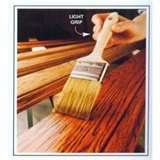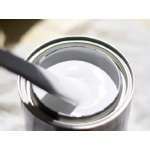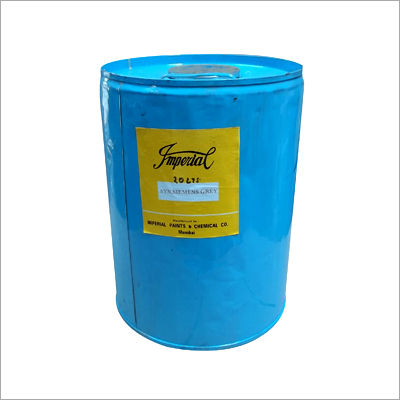N.C. Sanding Sealers
N.C. Sanding Sealers Specification
- Poisonous
- Yes
- Other Names
- Wood Sealer, Base Sealer.
- Shape
- Liquid.
- Form
- Liquid.
- Smell
- Characteristic solvent odor.
- Density
- 0.93 Gram per cubic centimeter(g/cm3)
- Solubility
- Insoluble in water; soluble in organic solvents like lacquer thinner and acetone.
- Storage
- Store in tightly closed containers, away from heat, sparks, and open flame.
- Refractive Rate
- Not determined.
- HS Code
- 32089099
- Classification
- Surface coating material.
- EINECS No
- Not available (mixture, not pure chemical).
- Grade
- Industrial and commercial finishing grade.
- Standard
- Conforms to industrial finishing standards.
- Type
- N.C. (Nitrocellulose) Sanding Sealer.
- Usage
- Applied to woodwork and furniture to fill pores and provide a smooth base for topcoat.
- Main Material
- Nitrocellulose, solvents, plasticizers, resins.
N.C. Sanding Sealers Trade Information
- Main Domestic Market
- Goa, Madhya Pradesh
About N.C. Sanding Sealers
N.C Sanding Sealers
N.C. Sanding Sealer is an ultimate product to be used on Wood surfaces to protect the change due to humidity. The product is so finely formulated that it offers an excellent finishing by filling up the pores left uncovered during finishing operations.
Technical Data
* Areas of application: Wood
* Ancillaries recommended: Filler
* Method of application:
* Brushing at 25-30 seconds
* Spraying at 20-25 seconds
We are dealing in only Maharashtra and Goa.
Why Choose N.C. Sanding Sealer?
N.C. Sanding Sealer is trusted in both industrial and commercial finishing for its rapid drying time and ability to create a flawless foundation for topcoats. Manufactured in India, this sealer works efficiently to fill wood pores and ensure even absorption of subsequent finishes, resulting in superior texture and durability. Its compatibility with various N.C. based finishes makes it a preferred solution for craftsmen and manufacturers alike.
Proper Application and Surface Preparation
For optimal results, wooden surfaces should be thoroughly cleaned, sanded, and dried prior to application. The sealer can be applied by brush, spray, or roller. It is essential to use N.C. Thinner or a similar solvent to achieve the right consistency. Always work in a well-ventilated area, avoiding ignition sources due to the products high flammability and solvent fumes.
FAQs of N.C. Sanding Sealers:
Q: How should N.C. Sanding Sealer be applied to wooden surfaces?
A: N.C. Sanding Sealer can be applied using a brush, spray, or roller. For best results, ensure the wood is clean, dry, and sanded before starting. Use N.C. Thinner or an equivalent solvent to adjust the viscosity as needed.Q: What are the storage requirements for N.C. Sanding Sealers?
A: Store the sealer in tightly closed containers, away from direct sunlight, heat sources, sparks, or open flames. Proper storage conditions can help maintain product quality for up to 12 months.Q: When is the surface ready for the next coating after using N.C. Sanding Sealer?
A: The surface will be touch dry in 1530 minutes and hard dry within 12 hours, depending on environmental conditions and film thickness. Make sure the surface is completely dry and sanded before applying additional coats or topcoat.Q: What benefits does N.C. Sanding Sealer offer for wood finishing?
A: It fills wood pores efficiently, creates a smooth base for topcoats, and accelerates the finishing process due to its quick-drying properties, leading to a more even, durable, and aesthetically pleasing finish on furniture and woodwork.Q: Is it necessary to use a specific thinner with this sanding sealer?
A: Yes, it is recommended to dilute the sealer with N.C. Thinner or an equivalent solvent to achieve optimal application properties and flow on the wooden surface.Q: What precautions should be taken during use?
A: Ensure adequate ventilation, avoid inhaling vapors or skin contact, and keep away from ignition sources, as the product is highly flammable and contains volatile organic solvents.Q: How should waste or leftover sealer be disposed of?
A: Dispose of unused sealer and empty containers according to local environmental regulations. Do not pour residues down drains or into open water bodies due to its hazardous nature.

Price:
- 50
- 100
- 200
- 250
- 500
- 1000+
More Products in N.C. Lacquers Category
Wood Lacquer
Shape : Liquid, Other
Poisonous : No
Main Material : Nitrocellulose
Solubility : Insoluble in water soluble in organic solvents
HS Code : 3208.10
Form : Viscous liquid, Other
N.C. Primer
Shape : Other, Liquid
Poisonous : Yes
Main Material : Nitrocellulose, resin, solvent, pigment
Solubility : Insoluble in water, soluble in organic solvents
HS Code : 3208
Form : Liquid
N.C. Lacquer
Shape : Other, Liquid
Poisonous : Yes
Main Material : Nitrocellulose, plasticizers, resins, solvents
Solubility : Soluble in organic solvents like toluene, acetone, and ethyl acetate
HS Code : 32089099
Form : Liquid
 Send Inquiry
Send Inquiry





